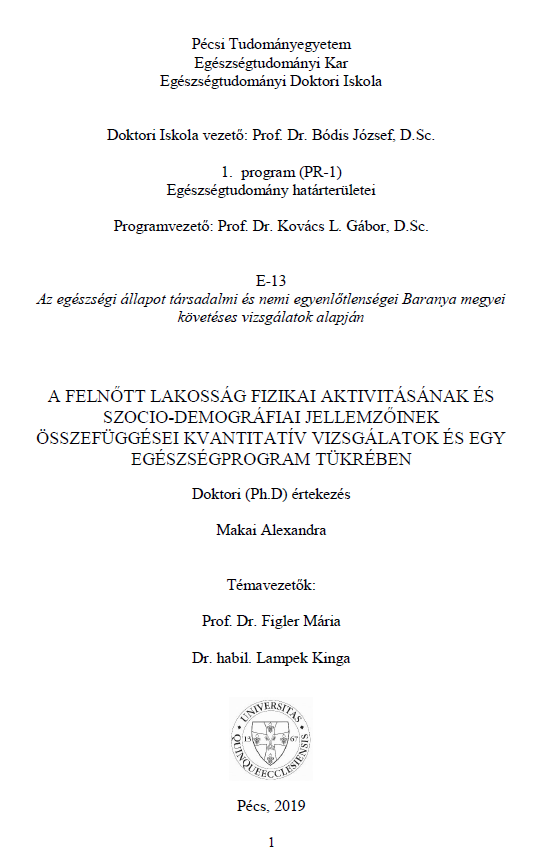A felnőtt lakosság fizikai aktivitásának és szocio-demográfiai jellemzőinek összefüggései kvantitatív vizsgálatok és egy egészségprogram tükrében
Abstract
Individual and public attention on regular physical activity is constantly growing nowadays. Regular physical activity positively impacts the individual’s health while his number of years spent without illness increases. The societal and economic influence of this is indisputable.
According to the World Health Organization's (WHO) recommendation, at least 150 minutes of moderate physical activity per week is suggested for a healthy adult, which may consist of moderate intensity activities for 30 minutes 5 times per week, or at least 20 minutes of high intensity activities 3 times per week. Also, activities aimed to improve muscle strength and endurance is recommended to be carried out 2-3 days a week.
The Eurobarometer 2017 data showed that 53% of the Hungarian population do no physical activity at all. 14% of Hungarians rarely engage in physical activity, and only 33% do sports regularly. While this result showed an improvement compared to the 2009 data, values are still lower than the European average.
Several studies are being carried out in Hungary on physical activity and sport habits, but there is no independent longitudinal study monitoring physical activity based on representative data, focusing on the healthy adult population. The only studies containing questions on physical activity are the Eurobarometer, the European Social Survey (ESS), the European Health Interview Survey, and the National Nutrition Survey (OTÁP). Such surveys are suitable to analyze overall tendencies, while an independent study offers an opportunity for detailed analysis of various forms of sport and physical activity, including the parallel application of subjective surveys and objective analytical tools, which provide precise information on the habits and amount of physical activity carried out by the Hungarian adult population.
Analysis of the correlation between physical activity and demographic features parallel to monitoring trends provides an opportunity to identify high-risk groups and develop health programs which specifically target such groups.
Interventions and prevention programs aim to increase the health status of the target group. There are several tools to reach this goal, such as physical activity programs or health days, etc. Web-based prevention programs are gaining momentum as internet penetration and the use of social media platforms is growing. Several researches prove that web-based prevention programs are easy to organize and flexible, and also hold the advantage of being available 24/7.

